Juneteenth Monument at Ashton Villa
Introduction
Text-to-speech Audio
With over 200 historical markers on the island of Galveston, the Juneteenth monument commemorates a reading of the Emancipation Proclamation written by President Lincoln in 1863 following the Civil War and a statue of state Representative Al Edwards. This proclamation demanded that “all persons held as slaves be set free.”
This 9 foot tall bronze statue of Edwards was erected on the grounds of Ashton Villa to commemorate the 1979 passage of legislation making June 19th a holiday "memorializing" the reading of the Emancipation Proclamation at Ashton Villa on June 19, 1865.
State Rep. Al Edwards (D-Houston) introduced the legislation in 1979 making June 19th a state holiday. The statue, costing approximately $100,000.00, was created in his likeness and honors him. It was paid for with state tax dollars.
Images
Painting of General Gordon issuing Order No. 3
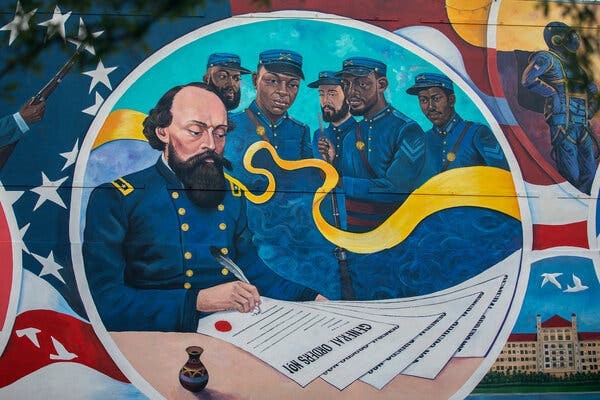
Juneteenth Historical Marker
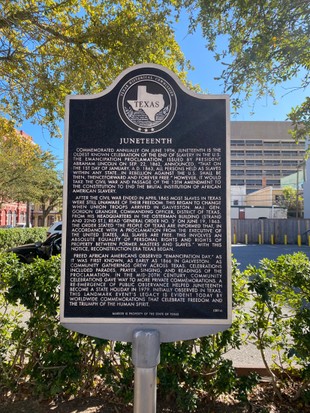
Embroiled in controversy, statues honoring the freeing of slaves in 1865

Statue of former State Rep Al Edwards
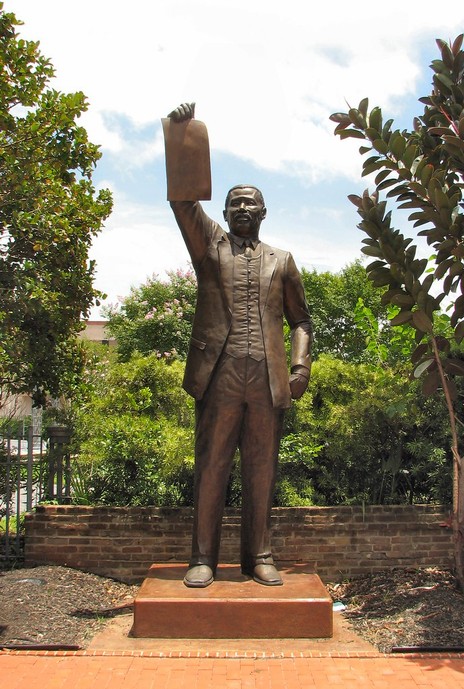
Band at the Juneteenth Celebration at Eastwood Parks 1900
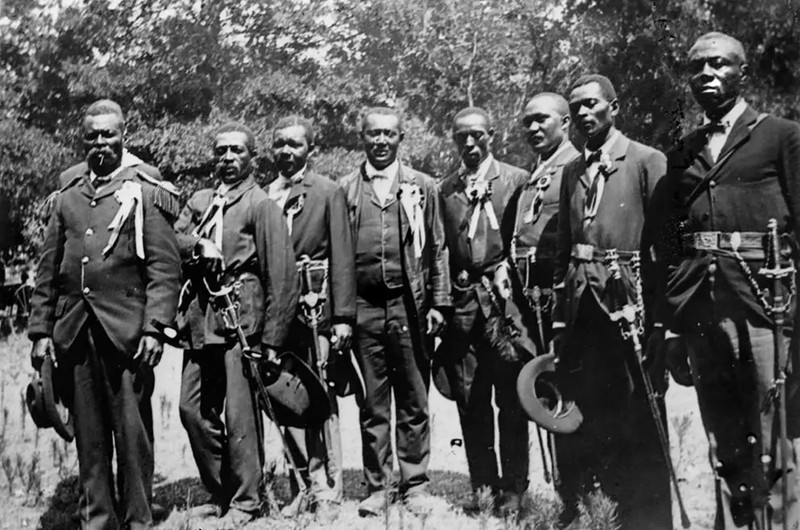
Juneteenth Parade Downtown Galveston 2004
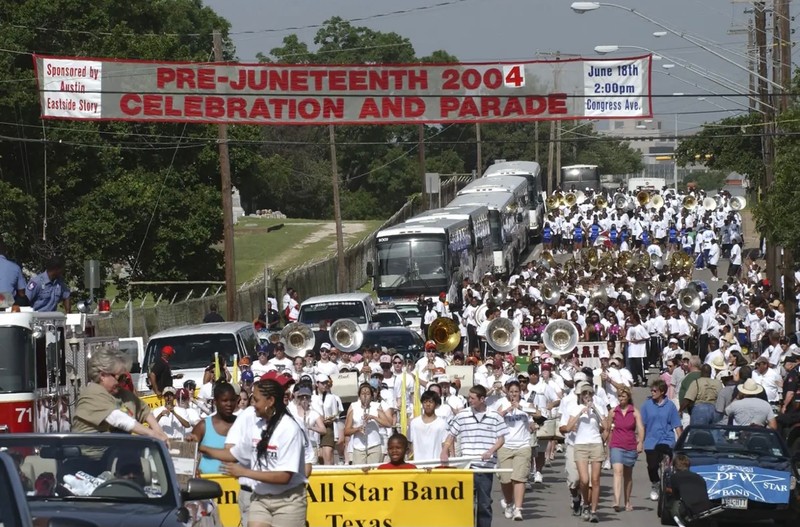
Backstory and Context
Text-to-speech Audio
News of the Proclamation did not reach Texas until two and a half years later because of intentional prevarication on the part of state governments, as well as slave-holding individuals. Many lawsuits came up in Texas between 1863 and 1865, challenging the proclamation. Slave owners wanted some type of financial compensation from the government due to loss of revenue from the slave trade.
In June of 1865, General order No. 3 was declared by the Union Troops. This order informed thousands of slaves that they were freed and had absolute equality. It is claimed by many historians that Gen. Gordon Granger read this No 3 order straight from the balcony of Galveston’s Ashton Villa which is what inspired the construction of the Juneteenth monument of Al Edwards at this location.
The bill to establish a Juneteenth monument, commemorating June 19, 1865, when federal troops arrived in Texas to declare slaves free — was pushed through in 1999 by former State Representative Al Edwards, Democrat of Houston. Though the five-statue monument was already built, it became clouded in controversy, preventing its installment in Galveston Texas at the Ashton Villa.
There were objections to one of the statues, which appeared to resemble Mr. Edwards, and the historical accuracy of the other statues came into question.
In 2011, after 12 years and more than $1 million of taxpayer money spent, the Legislature voted to end the Juneteenth project and install an African-American Texans memorial monument instead. This was due to State Senator Rodney Ellis’ (who co-wrote the new bill) belief that the Juneteenth project had “engendered such needless controversy.”
Many believed that the Juneteenth monument was becoming a punch line instead of a poignant symbol of the journey of African-Americans in Texas. Senator Ellis made efforts to calm angered citizens over the monument by claiming that the legislation passed in 2011 will offer a fresh start so that we can get back to what that symbol stands for and away from the bickering.
The first controversy arose in 2005, when some legislators, including Mr. Ellis, suggested that one of the monument’s statues looked like Mr. Edwards and seemed to inappropriately glorify the legislator. The Juneteenth commission, which was responsible for completing the monument, sent that statue to Galveston, where it stands on a prominent city-owned site.
The commission requested a replacement statue, but a similar problem arose. The new statue held a document labeled “House Bill 1016,” the legislation Mr. Edwards wrote in 1979 declaring Juneteenth a legal state holiday, instead of an emancipation document.
Another problem for the Juneteenth project was that its leading proponent, Mr. Edwards, lost his House seat in 2006, won it back in 2008 and lost it again in 2010. Amid delays and waning support, the Legislature repealed the project. The Juneteenth statues are stored in a foundry near Austin.
The new monument, largely financed privately, was installed at the Villa by 2014. Mr. Edwards said what mattered is that a monument will stand at the exact location the general order was read on June 19, 1865.
Formerly known as Emancipation Day, Juneteenth reconstructed a whole new era in Texas. Juneteenth celebrations created community gatherings amongst freed Americans. These gatherings include: parades, prayer, singing and readings of the Proclamation. It has become a growing holiday as President Biden, in June of 2021, signed into law a bill to make Juneteenth, or June 19, the 12th federal holiday.
Sources
Annie Karnie and Luke Broadwater. Biden Signs Law Making Juneteenth a Federal Holiday, June 17th 2021. Accessed December 8th 2021. https://www.nytimes.com/2021/06/17/us/politics/juneteenth-holiday-biden.html.
Trovall, E. (2021, June 18). Galveston unpacks Juneteenth history with new Downtown Mural. Houston Public Media. Retrieved October 7, 2021
Janell Ross
galveston.com
nytimes.com
galveston.visitwidget.com
Texas Tribune
Texas Tribune
